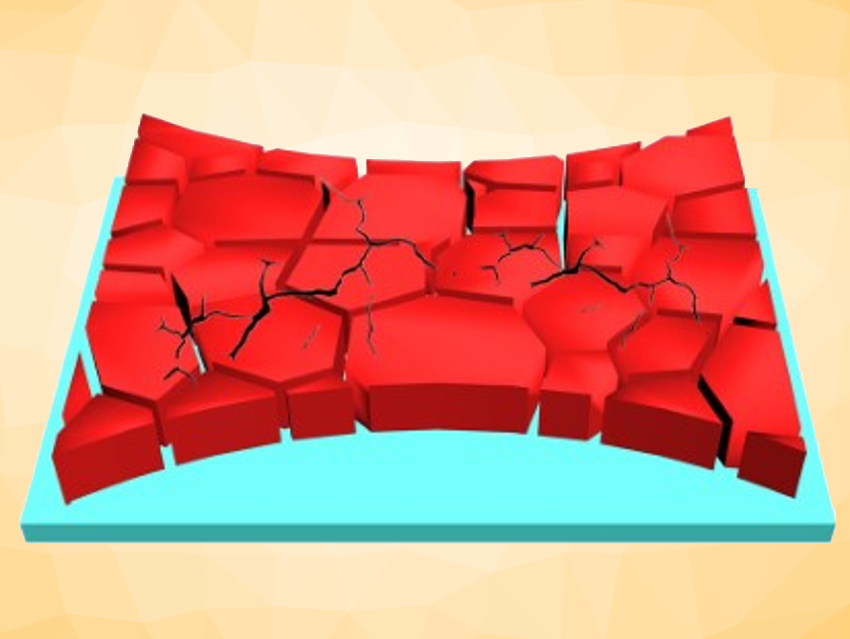Perovskite solar cells (PSCs) are a promising photovoltaic technology for applications that require stretchable materials because of their flexibility, low weight, and low cost. However, perovskite films on flexible substrates are naturally brittle and possess poor crystallinity and numerous grain boundaries. This results in performance losses. Grain-boundary defects are crucial for the stability of PSCs: Under mechanical stress, cracks are first observed at the grain boundaries.
Xiaotian Hu, Nanchang University, China, Fengyu Li, Jinan University, Guangzhou, China, Yiwang Chen, Nanchang University and Jiangxi Normal University, both Nanchang, China, and colleagues have tackled this problem. The researchers prepared stretchable PSCs using a self-healing polyurethane (s-PU). The s-PU was synthesized by a polyaddition of multifunctional oximes and hexamethylene diisocyanate at ambient temperature. The resulting material has reversible covalent oxime–carbamate bonds (pictured below). It was introduced as a scaffold into the perovskite crystallization process. Perovskite films produced in this way have an enhanced grain size and improved crystallinity. The perovskite films (pictured below in red) were coated onto a stretchable polydimethylsiloxane substrate (pictured below in cyan).
Because of its dynamic oxime–carbamate bonds, the s-PU can effectively self-repair cracks at the grain boundaries caused by stretching via thermal annealing at 100 °C. The flexible PSCs achieve a power conversion efficiency (PCE) of 19.15 % and can recover over 90 % of their original PCE after 1,000 cycles of 20 % stretching
.jpg)
- Stretchable Perovskite Solar Cells with Recoverable Performance,
Xiangchuan Meng, Zhi Xing, Xiaotian Hu, Zengqi Huang, Ting Hu, Licheng Tan, Fengyu Li, Yiwang Chen,
Angew. Chem. Int. Ed. 2020.
https://doi.org/10.1002/anie.202003813



